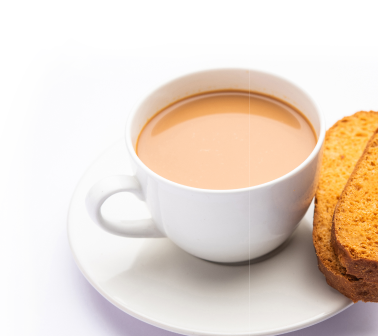Tea, an aromatic beverage, is one of the oldest drinks in history. It is commonly
prepared, by pouring hot water, over cured or fresh leaves, of the Camellia
Sinensis, an evergreen shrub originating in East Asia. Tea plants probably
originated, in the border areas of north Burma and southwestern China.
Tea has a stimulating effect, because of its caffeine content.
Tea was originally consumed only by Anglo-Indians. It became widely popular in India
in the 1950s, because of an effective advertising campaign, by the India Tea Board.
This legendary drink is reputed, to have been first discovered some 5000 years ago,
by mistake! The Emperor of China, a curious soul, found tea leaves in a pot of
boiling water. He tasted the drink and loved it.
Before long, tea became popular with the laypeople in China. Tea drinking may have
started in Yunnan region, mainly for medicinal purposes. Later, people in Sichuan
started using tea, as a bitter yet stimulating drink.
By 800 AD, a detailed history of its use was documented, by a Zen Buddhist priest.
Zen Buddhist started using tea, in various meditative & religious rituals, because
they believed that, tea increased spiritual concentration.

